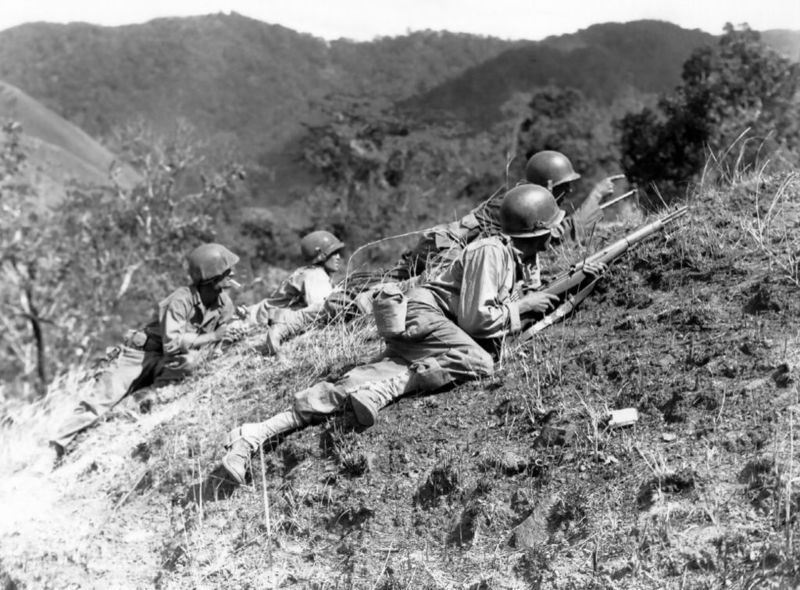The Battle of Luzon was fought from January 9 to 15, 1945, between Allied and Japanese troops. Luzon is the largest island of the Philippines, located at the northern end of the island chain. In 1942, Luzon was captured by the Imperial Japanese Army, which eventually took over the entirety of the Philippines. American General Douglas MacArthur, who had been in charge of defending the Philippines, had to flee the islands when the Japanese captured them, but he promised to one day return. Despite constantly pushing to be allowed to take back the Philippines, MacArthur was told he would have to wait until victory was almost guaranteed for the Americans. In 1944, after the United States was successfully on the offensive, MacArthur was finally allowed to begin his campaign to take back the Philippines. After subsequent successes at the Philippine islands of Leyte and Mindoro, MacArthur then set his sights on Luzon.
In mid-December 1945, U.S. troops had captured the Filipino island of Mindoro, located to the south of Luzon. Before Allied troops could move forward to Luzon, airbases had to be established at Mindoro in order to support the ground troops. By the end of December, two airbases had been established and were prepared to aid in capturing Luzon. Despite these bases being positioned to the south of Luzon, MacArthur planned to attack from the north in order to take the Japanese by surprise. In the days leading up to the attack, Allied forces made flights over southern Luzon and sent out minesweepers to clear out Luzon’s southern bays, in an attempt to convince the Japanese that the attack would be coming from the south. Despite this, the Japanese general at Luzon still built up considerable defenses to the north of the island.
On January 9, Allied warships moved into Lingayen Gulf, located in northwest Luzon, and began to bombard the Japanese positions on the shore. Within an hour of the ships arriving, American and Australian troops began landing on the island. Japanese pilots launched kamikaze attacks, where pilots in aircrafts laden with explosives would purposefully crash into enemy ships, hoping the impact and explosives would destroy them. Using this tactic, the Japanese successfully sank an escort carrier, a destroyer, and several warships. Despite this, 175,000 Allied troops landed and established a beachhead, and in the following days began to move south towards the capital city of Manila. A second landing occurred on January 15 to the southwest of the island, as more troops began to move towards the main objective, Manila. Allied troops quickly began capturing crucial bridges that led to the city, and soon the Battle of Manila began.
The Battle of Luzon would separate into various distinct battles throughout the island in the weeks following the initial landings. By March 1945, Allied forces managed to take control of all of the strategically important locations across the island, such as the city’s economic and industrial centers. Some small groups of Japanese soldiers held out in the mountains, most of whom gave up after the surrender of Japan in August. Some, however, kept fighting for years after the war ended, refusing to surrender. Overall, 205,535 Japanese soldiers died at Luzon, while only 10,640 American soldiers died. The Battle of Luzon was thus crucial in opening a path to Manila, allowing the Allies to successfully take the Philippines back from the hands of the Japanese.
Suggested Reading:
Clayton Chun, Luzon 1945: The Final Liberation of the Philippines (Bloomsbury Publishing, 2017)








